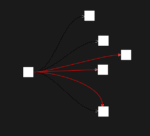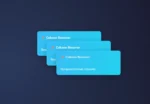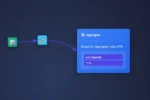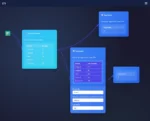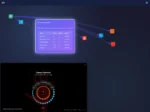
Graph Database Visualization: Relationship Mapping at Enterprise Scale
In today’s rapidly evolving digital landscape, enterprises face complex questions that traditional data systems can’t effectively answer. Understanding relationships between various elements of your data isn’t just helpful—it’s essential. Enter graph database visualization. This dynamic technology allows businesses not only to store but to clearly see connections between datasets, uncover hidden insights, and drive innovation. Imagine being able to visually map intricate customer journeys, supplier dependencies, or operational networks effortlessly. Graph visuals deliver this clarity, empowering decision-makers to recognize trends, assess risks, and capitalize on opportunities faster. By harnessing relationship mapping at scale, enterprise leaders transform raw data into actionable intelligence, providing a strategic advantage in an increasingly competitive market.
The Rising Importance of Graph Databases for Enterprise Data Strategies
Graph databases have emerged as a crucial tool in the enterprise data strategist’s toolkit, surpassing traditional relational databases when it comes to capturing and exploring multifaceted relationships. Unlike conventional relational databases that store data in tables with rigid, predefined schemas, graph databases offer flexibility through structures consisting of nodes, relationships, and properties. This structure inherently focuses on relational connectivity, making it ideal for complex relationship discovery—the kind commonly encountered in enterprise-scale data.
For many enterprises, this transition has become increasingly necessary. As described in our article covering Business Capability to Data Asset Mapping Registry, mapping assets to core business competencies is foundational. Graph technologies build upon this concept by visually mapping not only business capabilities but also the intricate interdependencies that exist across enterprise datasets, integrations, stakeholders, and digital resources.
From detecting fraud in financial transactions, managing large-scale logistics networks, or mapping digital transformation roadmaps, graph databases provide unparalleled insights into complex enterprise problems. Empowered by these insights, decision-makers gain a significant strategic advantage over competitors relying exclusively on legacy databases for analytics and reporting.
Visualizing Complex Relationships: Making Big Data Intuitively Accessible
At enterprise scale, data complexity can become overwhelming—even for seasoned data analysts. Graph visualization technology bridges the gap between raw data and actionable insights by employing clear, visually engaging models. Data visualization tools like Tableau, as detailed extensively in our insights piece, Tableau Desktop and Tableau Data Extract BI Software, help turn detailed data into interactive visual analytics. Graph database visualizations amplify these abilities further by explicitly mapping relationships and dependencies.
With simplified, user-friendly visualizations, stakeholders across varying proficiency levels can intuitively understand complex relationships without technical training. Analysts, decision-makers, and executives can visually pinpoint critical themes and business-link relationships amongst customers, suppliers, products, and market data. Effective visualization democratizes data-driven decisions across business units and promotes proactive rather than reactive decision-making.
Date dependencies, integration complexities, and nuanced business rules can indeed become overwhelming; visual graph caching transforms this complexity into easy-to-understand global views. To streamline user experiences further, transparent data sharing policies as addressed in our article about Building Trust with Users through Transparent Data Sharing, ensure enterprise-wide accessibility and usability, fostering a data culture centered on trust and collaboration.
Enterprise-level Challenges Solved by Graph Database Visualization
Graph visualization directly addresses many unique enterprise-level challenges that traditional tools struggle with. Such challenges include real-time fraud detection, operational resilience planning, regulatory compliance tracking, and complex supply chain mapping. Financial institutions, for example, utilize graph-shaped queries to detect suspicious transaction patterns rapidly—something extremely cumbersome when queried via traditional methods. Similarly, visualizing extensive supply chains can pinpoint disruptions or risks before they escalate.
Visualizing relationships can reduce redundancy and expose vulnerabilities. Our piece on achieving cost-effective data movements using Zero-Copy Integrations: Minimizing Data Movement Costs exemplifies the kind of optimization possible at enterprise scale by leveraging graph models. Graph database insights also dramatically improve data lineage transparency, helping businesses quickly understand and comply with changing regulatory environments.
Moreover, complex business rules or evolving organizational frameworks frequently contribute to disconnected data silos. Graph visualizations aid enterprises in integrating disparate systems and overcoming silos by clearly illustrating the logical relationships across applications and databases, paving the way for cohesive data strategies.
The Role of Cloud Computing and Ephemeral Environments in Graph Visualization
Robust cloud computing platforms have fueled the ability to perform large-scale graph database computations, offering innovative solutions like ephemeral computing to handle bursts of intense analytic workloads. Choosing the appropriate cloud infrastructure is critical—a decision we explain further in our GCP Consulting Services. Cloud-based environments significantly simplify deploying highly complex representations, enhancing scalability and making graph database visualizations achievable enterprise-wide.
The agility offered by ephemeral environments—an ideal solution we previously discussed in the context of Ephemeral Computing for Burst Analytics Workloads—allows businesses to adapt seamlessly to fluctuating analytic demands without over-investing in persistent infrastructure. Graph-based computations often require powerful processing for short durations; cloud providers respond efficiently to these fluctuating demand patterns, delivering cost-effective performance.
Enterprise data architects and CIOs now have platforms capable of scaling effortlessly. Investing strategically in graph visualizations interoperable with cloud-based services empowers intelligent and responsive decision-making, ensuring that technical capabilities remain agile, performant, and resilient in the face of growth and changing organizational needs.
Critical Considerations When Adopting a Graph Database Visualization Solution
Although graph database visualization provides transformative benefits, the transition also necessitates thoughtful consideration before choosing solutions. As we emphasize with clients in our foundational guide, The Questions We Ask Clients Before Writing a Single Line of Code, achieving alignment between tool choices and business objectives remains essential.
Key considerations include evaluating the complexity of desired analyses, scalability requirements, integration compatibility, security provisions, and user accessibility levels across an organization. Security mechanisms—such as effective Dynamic Data Masking for Role-Based Data Access—must be robust to protect sensitive relationships, personal data, or proprietary corporate strategies from unauthorized access.
Another strategic decision revolves around ETL (extract-transform-load) processes and solutions. Selecting ETL tools influences how easily data can flow into these graph databases, ensuring maximum accuracy and integrity when data is visually mapped. Enterprises should thoroughly assess various solutions by reviewing our insights on both How to Choose the Right ETL Tool for Your Business and the practical Comparison of Open-source and Commercial ETL Solutions.
Implementation and Strategic Adoption: Leveraging Visual Insight for Innovative Advantage
To drive smart adoption, enterprises should approach graph database visualization as a foundational piece of their broader enterprise data strategy. Building a robust framework requires iterative versioning and intelligent deployment strategies, ideas we cover comprehensively in our guide on Enterprise Data Model Versioning and Deployment. A step-wise approach enables iterative refinement of graph integrity, visualization quality, and analytics capability based on user feedback and evolving needs.
Ultimately, the enterprise benefits from coherent combination—data governance, high-quality visualizations, accessible analytics, and cloud-enabled computational power—that fuels innovation. Enterprises leveraging graph visualization successfully uncover hidden efficiencies, deliver competitive differentiation, and convert complex, multi-dimensional datasets into strategic insights that drive real-time business agility.
Graph Database Visualization scales seamlessly in today’s enterprise environment, allowing businesses not only to represent their data clearly and intuitively but to power sophisticated decision-making processes and strategies. The differentiating factor lies in leveraging relationship mapping strategically and purposefully. With the right visual insight, enterprises gain powerful competitive advantages, enabling smarter decisions that align closely with core strategic objectives.
Thank you for your support, follow DEV3LOPCOM, LLC on LinkedIn and YouTube.


